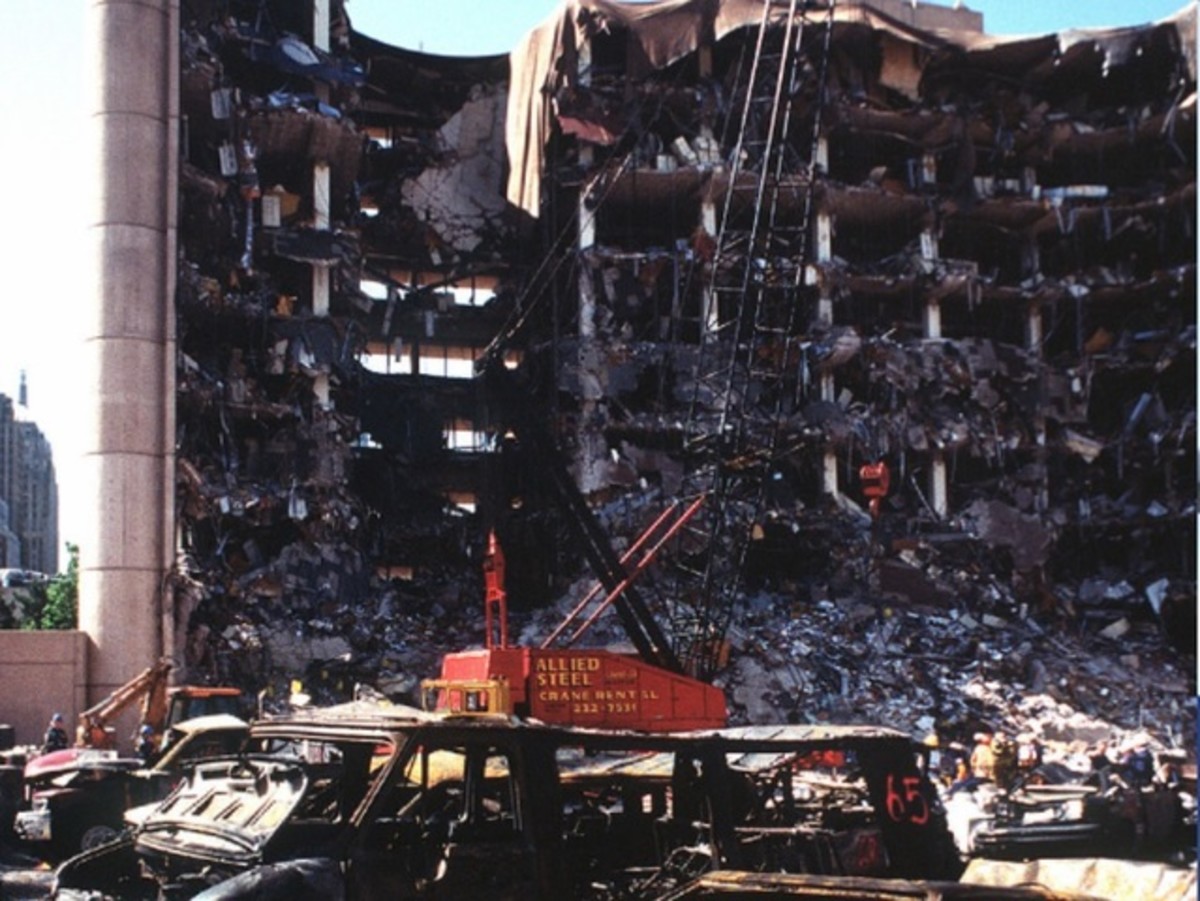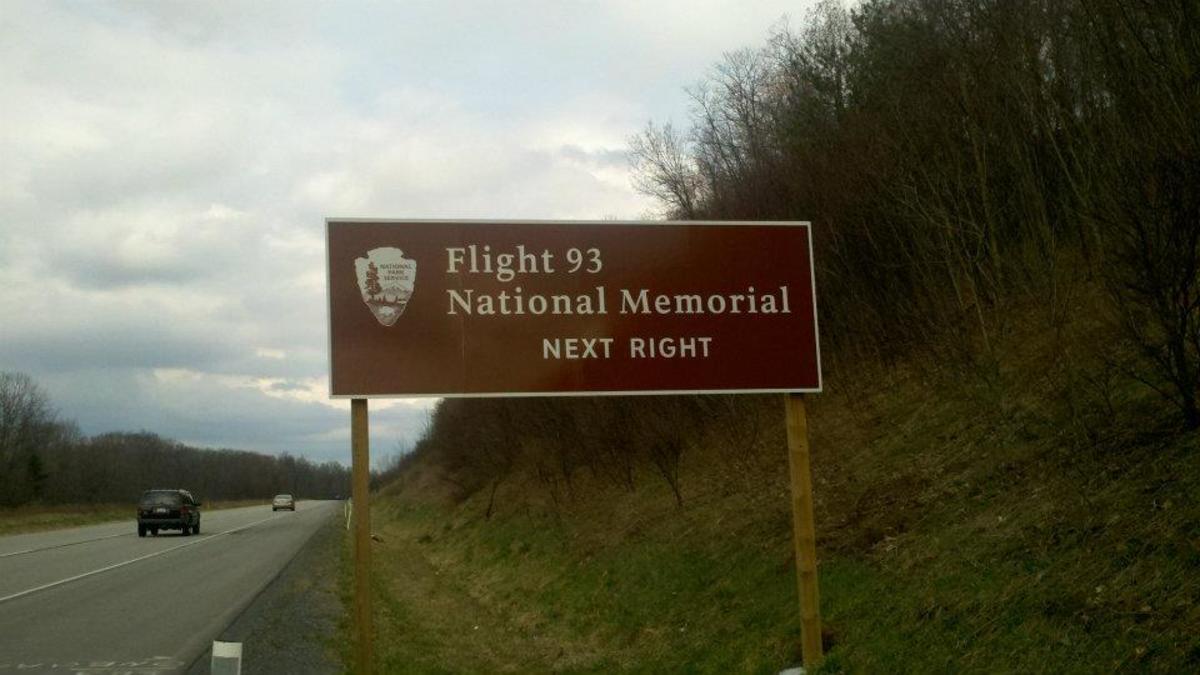Why the 9/11 Conspiracy Theories are Balderdash

They Never Get Tired of This Stuff
I'm sorry, I get a LOT impatient with these 9/11 conspiracies. I read the reports. I've also checked up on some of the so-called "sources" the conspiracy guys use to prove that George Bush ordered the hit on the Twin Towers in order to give his buddies at Haliburton a quick profit off the Iraq war. It's balderdash. The sources tend to turn out to be bogus.
A friend whose intellect I otherwise respect suggested that it was stupid to think that "...a little bit of gasoline in an airplane can replace strategically placed explosives that make a building implode." Of course the buildings pancaked rather than imploding, but that doesn't fit the narrative, so the conspiracy theorists never bother to point out the difference between the two.
He also asked, "Why do they pay enormous sums of money to companies that demo buildings if all you have to do is pour a little jet fuel on them?"
Sounds logical (also snarky) until you manage to get past what you think you know and get to what the facts really are. Planes seem like they must be really lightweight since, after all, they fly. Most of us have no idea how much fuel such planes carry. Finally, we see slow-mo pictures of the planes and still shots, but in reality the planes struck the building at hellacious speeds.
The Facts:
- The planes weren't carrying "a little bit of jet fuel". It was 160,000 pounds of highly volatile jet fuel per aircraft - 80 tons of the stuff.
- The jets weighed better than 127 TONS at least. One of them likely weighed closer to 150 tons.
- The planes were traveling at 494 miles per hour and 537 miles per hour respectively, the second was traveling so fast it was in danger of breaking up in the air before it hit the building - it had exceeded maximum dive speed. It was in a dive at the time of impact, that's why it hit at a down angle and canted. He was coming in too hot and almost missed the building. Both planes were traveling well above normal cruise speed.
- It's a tribute to the engineers who designed the building that they didn't fall over on the spot. It's bloody miraculous that anyone was able to walk out of that building alive after it was hit with that much explosive and kinetic energy.
- The idea that someone could have rigged the WTC with implosion charges without anybody noticing. That place was occupied 24/7 and the charges would have to have been placed on key structural members in places no one could have failed to notice.
- It would have taken hundreds of people being in on the scheme and how in hell would you get so many demolition workers to keep a secret that would have netted them tens of thousands of dollars a piece from the National Enquirer. There'd have been a half dozen of them on Letterman if they could have proved the government did it.
The beauty of the conspiracy theory is that its based on conjecture, not hard evidence. You can't prove a thing so you can't disprove it either unless you resort to studying actual facts to form your opinion rather than forming an opinion and then playing with the facts till you get them to "prove" your gut feeling. That's backwards, but more on that later.
The 9/11 attack was made with enormous airplanes which fly very fast. Most of us have no idea how heavy an aircraft actually is - close to 128 tons, 80 tons of it is very explosive jet fuel. We pick up 200 pounds in a gym and think we've lifted a very heavy weight. An airplane would be like picking up close to 1300 two hundred pound wrestlers, all made of solid iron. Throw that weight against a building at 537 miles per hour and see what happens.
The maximum weight of a wrecking ball is 12,000 pounds, so you'd need more than 21 of the largest wrecking balls in existence (and there probably aren't 21 of that size in the world) to duplicate the weight of flying metal. The 21 wrecking balls would have to be traveling at 3/4 of the speed of sound to duplicate the effect just the impact that one plane had on the Twin Towers. You'd need a very powerful cannon - 21 of them in fact - to pull off a barrage like that.
Two things Americans build really well - large airplanes and tall buildings. That accounts for why the planes did so much damage. That's why the building took a while to fall down and when the thing collapsed, it pancaked instead of toppling over. Such buildings are built to resist sideways pressure from wind, hurricanes and even tornadoes.
A tornado once hit the Bank One Building, a 35-story glass tower in downtown Ft. Worth. It broke lots of glass, but the building didn't blow over despite the horrific pressure of the one of the most powerful forces known to man striking it with full force on one side. I know. I saw the tower afterward. Lots of missing glass, but it didn't fall over as you'd expect thanks to it's design which prevented it from swaying too far. It lost 80% of its glass and owners planned to tear the building down, but a developer bought the property and turned it into apartments. Tall buildings are made to take a lot of lateral force from hurricanes and tornadoes and such. Having six or eight top floors dropped straight down on the lower floors, however - not so much.
In the end, it's Occam's razor to the rescue - the simplest explanation is usually right. Terrorists wanted to send a message - specifically Osama Ben Laden wanted to send a message to the Great Satan and make us afraid to come after him anymore. Turns out terrorists are not that smart after all. The Jihadis reckoned on striking fear into lazy, timid decadent Americans. They are evidently not very good with history. They forgot all about what happened after Pearl Harbor. They under-estimate us. They always do.
9/11 cost Al-Quaeda almost all of their leaders and tens of thousands of their foot soldiers. It cost Osama Bin Laden his life. it cost Saddam his life (and yes he did make contributions to terrorism. Don't think he didn't.)
Now go ahead and blast me and tell me what a fool I am and how you're incredibly complex theory makes our own country guilty of killing its own people for a few damned dollars. I don't think they teach logic anymore. You're supposed to start with facts and then form an opinion. You don't start with a dim-witted, uninformed opinion and then try to find facts to prove them. That's just lazy and monumentally ego-centric. Get over yourselves people.
Obi-wan Kenobi told Luke Skywalker to "Trust your feelings, Luke." It's a movie people. Feelings can be dead wrong if they are improperly trained. Feelings are supposed to be a shortcut to action, not a short cut to thinking. Feelings help you to swing a baseball bat or twirl a hoola hoop. Never trust them when forming an opinion about something. Go back and think with your upper brain. It's where the intellect is. Your feelings must serve your intellect, not the other way round.
Just because you don't fully understand how much an aircraft weighs or how much fuel it had on board or how fast it was going or what kind of damage it did on impact or how the design of the building might weigh upon the outcome of what happened on 9/11, doesn't mean you can't figure it out if you bother to look at the data - the real data, not a bunch of made up after the fact crap from imaginary architects and engineers.
Use your head, Luke!. How about it?
{C} 2015
A bit more about 767s.

A little Idea of the Destructive Power of a Fully Loaded 767.
Weight of the First Plane* That Hit the Tower: The second plane was heavier.
- 71 Buick LeSabres
- Four Sherman Tanks
- Two M1A1 Abrams Tanks
- Six Steamrollers
- Seven city buses
Explosive potential of the Fuel:
- While a stick of dynamite (a half pound of TNT) has an energy potential of 2000 BTUs. The same amount of jet fuel has an energy potential of 10,000 BTUs when mixed with air - five times the energy potential of a single stick of dynamite pound for pound.
- Therefore given the amount of jet fuel sprayed around the building, the energy potential would have been explosive equivalent to 119,400 some-odd sticks of TNT.
Impact Given the Speed of the Plane:
- This is a very nice scientific article done at M.I.T. that makes a thoroughly convincing case that the initial impact was the primary cause of both tower collapses and not the fire. They DO talk about the speed and weight of the plane and use rather a lot of complicated engineering formulas in case you want to check their work. While the fire likely weakened the structure, the authors conclude that it was the sheer force that did most of the damage. The study uses real science rather than number juggling to prove a paranoid hunch and M.I.T. is a pretty good engineering school I hear.
The Building's Structure:
- You don't have to melt steel to damage or weaken a steel girder.
- It may take time for a beam to collapse from the weight of all the floors above.
- The supports around the outside of the frame are designed to resist swaying, therefore it would likely tend to hold up better at the edges than at the center, thus the building would successively collapse toward the middle first followed by the edges. This would account for the straight down direction of the collapse. See MIT article.
* It should be noted that a fully loaded 767 can weigh close to 200 tons (111 Buicks, 6 Sherman tanks, 3 Abrams Tanks, 9 steamrollers or10 city buses plus a shuttle bus. On 9/11, it was flying light.








